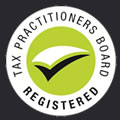7 February 2021
When you first went into business, either buying an established enterprise or starting from scratch, probably the last thing on your mind was the day you would close the door for the last time.
But in a way it’s inevitable, whether through the outcomes from COVID-19, retirement, health reasons or, in a more ideal scenario, pursuing another career. But it’s important for you to know what’s involved when you come to the time when you close your business, as this can go a long way to smoothing the transition.
For starters, it’s important that all your tax issues are finalised before you cancel your Australian business number (ABN), which ceases that business. This allows the ATO to finalise your business’s account and issue any refunds that may be owing.
Step 1: Lodgement and payment
Make sure all lodgement and payment obligations are met, including:
- outstanding activity statements
- outstanding instalment notices
- final fringe benefits tax returns
- final income tax returns.
Step 2: Refunds
Request any refunds for accounts with a final tax position in credit.
Step 3: Cancel pay-as-you-go (PAYG) withholding registrations
You can do this by phoning the ATO’s business line (13 28 66) and speak to a customer service representative, or complete an Application to cancel registration form (ask for “NAT 2955”). Or we can do this for you.
Step 4: Cancel the ABN
This step must be completed after the first three steps – this will stop any problems with refunds being delayed and the need for the ATO to contact you (or this office on your behalf). The ABN needs to be cancelled within 28 days of your ceasing business through the Australian Business Register.
Cancelling the ABN will:
- cancel registrations for goods and services tax (GST), luxury car tax, wine equalisation tax, fuel tax credits
- cancel AUSkeys linked to the ABN
- end all authorisations for the business in Relationship Authorisation Manager, preventing access to the online services using myGovID.
After cancelling the ABN, it will pay to keep in mind that you may have a PAYG instalment obligation through to the date of ceasing business, and may still receive instalment activity statements. You are able to vary your PAYG instalment amount if the amount or rate the ATO calculated doesn’t reflect your circumstances due to you ceasing business.
Step 5: Record keeping
You need to keep business records for five years from when they were prepared or obtained, or from when the transactions or acts those records relate to were completed, whichever is later.




